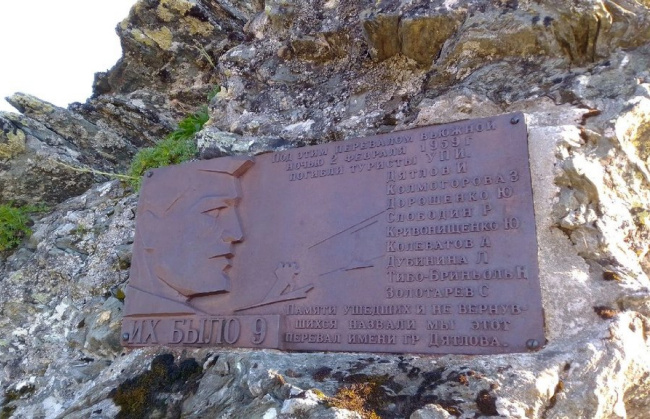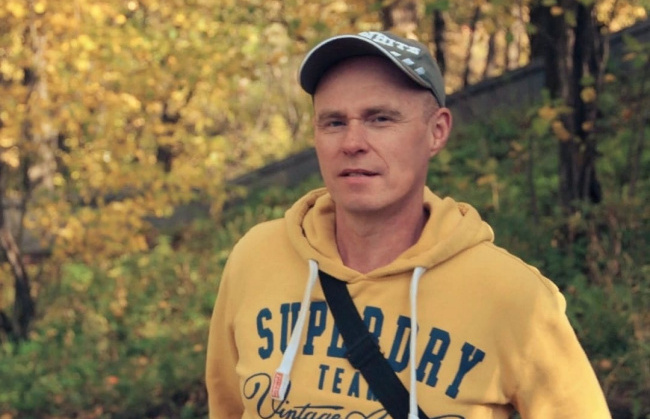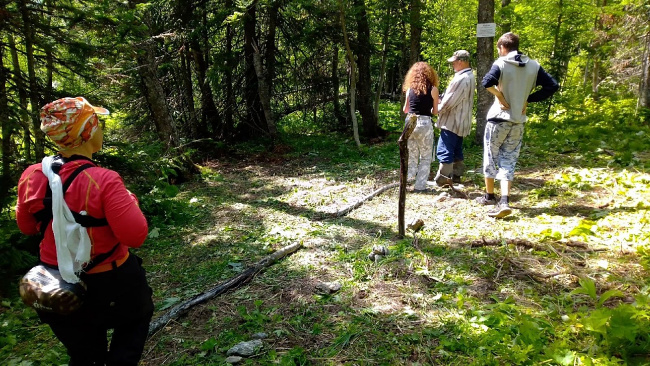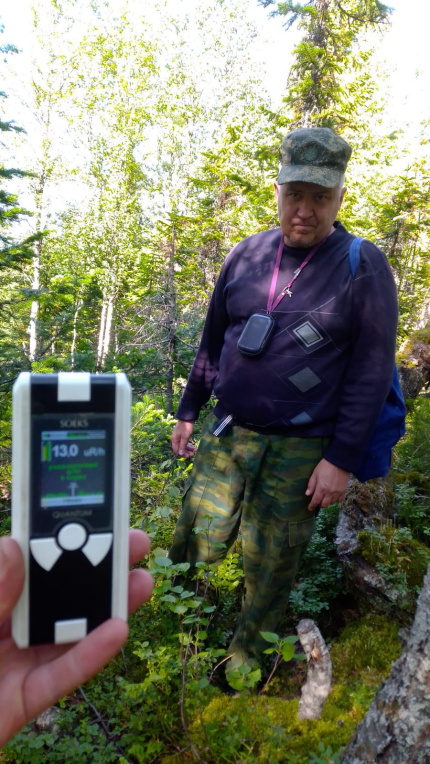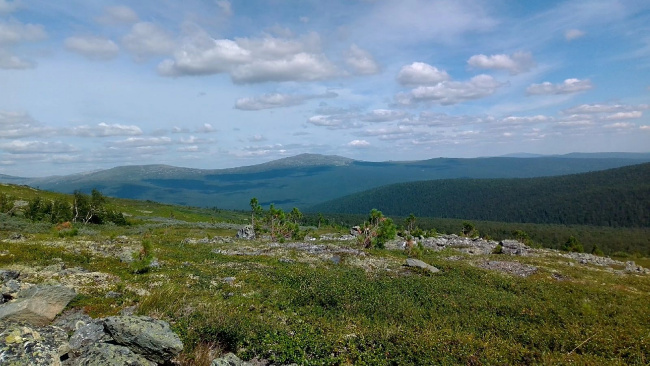
Canned time
Exclusive. The findings of the expedition, which returned from the Dyatlov Pass, may reveal a new version of the death of the hikers in 1959
August 11, 2022. All rights belong to Oblgazeta.ru. Author Ekaterina Khozhateleva
A group of researchers returned to Yekaterinburg after a ten-day trip to the Dyatlov Pass. The leader of the expedition, Aleksey Korolyov, explained to the correspondent of "OG" Ekaterina Khozhatelova how the finds discovered by them can change the versions of the death of the Dyatlov group half a century ago.
After 10 days in the taiga. Aleksey returned from the expedition only this morning, and after hearing about the interview, he asked to call as soon as possible being in a hurry to meet his friends. On August 11, exactly a year ago, the head of the Dyatlov Group Fund, Yuri Kuntsevich, passed away. The telephone conversation with Aleksey lasted less than 20 minutes. But during this time he said a lot of interesting things.
We thought: "Here it goes!"
— Tell us how the expedition to the Dyatlov Pass went this time: were there any surprises?
— From previous expeditions, we have already got used to the fact that some kind of emergency happens all the time: we constantly had some kind of trauma. And we thought that this time would be no exception. But, fortunately, everyone is alive and well, they returned on time.
But there was still a small hitch. Before starting the hiking, it was necessary to drive from Ivdel on a shift for about 7 hours through the taiga, through rivers, streams - a very difficult road. And here two wheels were pierced at once.
We had to repair right on the road. Of course, the driver did it, but we also helped, because the wheels of KamAZ are huge. All in all, the repair took two hours. This is perhaps the only thing that overshadowed the expedition.
— Wasn't the heat a problem?
— No, on the contrary, the clear weather helps to devote more energy to research activities, and not to dry off and harvest firewood.
— Who took part in the expedition?
— Our core team consisted of 17 members, plus a few more hikers from among our friends. Together with us they reached the Dyatlov Pass, then some went further. That is, they did not participate directly in the work of the expedition. This time the group was very diverse, from age 10 to 60 years old. Almost half are from Yekaterinburg, the rest are from other regions. These are mostly researchers who have been engaged in this history for many years and have been to these places. For example, Aleksander Alekseenkov from Moscow - he has probably been to the Dyatlov Pass 15 times already. He knows almost everything. There was the son and grandson of Yuri Konstantinovich Kuntsevich. There was a writer from Bulgaria, Teodora Hadjiyska, who wrote a book and decided to visit this place.
And we all went together.
There were people who went for the first time, and they were almost half of the expedition. We gave them tours of the main points, and they helped with the chores as much as they could.— Were there archaeologists in the expedition?
— There were no archaeologists. But we hope that next time we will have such specialists.
Bark found under the grass
— What new discoveries did you make this time, what artifacts did you find?
— Firstly, the place of the labaz (the labaz is a place where hikers leave surplus supplies before an ascent - ed.) of the Dyatlov group. Where was their last but one night on January 31, 1959. It was found back in 2019. This time a new finding confirmed it. In a clearing a spot was found measuring a meter and a half, lined with birch bark. This is the bark that the Dyatlov group laid. That is, they put products on it. We found it preserved, however, already covered with a thick layer of turf.
— Why did you decide that this is the same bark laid by the Dyatlov group in 1959?
— Because a number of factors come together. For example, there are many photographs taken at the site of the labaz. We compared all this, and all members of the expedition recognized that this is the same spot.
For example, there are some notable trees that the searchers have photographed. We carefully checked all this, and it turns out that the configuration of the trees and the slope of the mountain all match. And when in the place where the tent of the Dyatlov group allegedly stood, we found this bark, then everything came together.
— It turns out that this site is underground?
— Not underground, but under the turf. There, about three centimeters grew during this time - the interweaving of roots, grasses - all this reliably covered and conserved this place in this way.
Condensed milk hacked with an ax
— Did you find anything else?
— This time we brought two metal detectors with us. I worked with one, and another member of the expedition, Oleg Taymen, had another. And so, together with him, rechecking each other, first near the cedar, where the first two bodies of the Dyatlov group were found, we found a rusted piece of a tin can, presumably from condensed milk. Like the one in which condensed milk was produced in the USSR.
— Or maybe canned meat?
— Maybe. We discussed that, according to Soviet GOST, there seems to be a difference between these two banks in size. We can't tell right now what it's from, but it's clearly canned food.
That is, this is not even a can, but its upper part with a lid. Perhaps, in the absence of a knife, it could have been opened with an ax.
We found it 28 centimeters deep underground. Moreover, huge amount of thick roots on top of the can suggests that this find is not from the 80s, but from the 50s, and over the years it has been covered with vegetation.
The question is, who brought this can? Perhaps the Dyatlov group themselves. But then this overwrites all previous versions, because none of them confirm that they ate something near the cedar. Although theoretically it is possible. We have to investigate.
Or the searchers could have left the can. However, given that the investigation was ongoing, no one would have allowed them to throw garbage 10 meters from the place where the bodies were found.
There is a third option: it was disposed by some other unidentified persons, and at that time they were also at the cedar. In any case, this find, it simply breaks many speculations about the Dyatlov case.
— There can't be some random cans? Was this a remote taiga at that time?
— Cans could be found but in the surface layer. Only a very old can will reside under 28 cm of earth and vegetation. And at that time this was a deaf taiga. The Dyatlov group were the first. That is, before them there was no one that had to go through this place.
The probability that some people happened to be at the same cedar at about the same time and threw the can is generally fantastic, like a needle in a haystack.
At that time, the mountaineering was just starting. The Northern Urals was practically not hiked yet. And if, for example, people still walked along that path, then the deviation of 1.5 km into the forest, as the Dyatlov group did, it’s just unrealistic to imagine.
I was lucky enough to find this can, and Oleg Taymen found in the stream, where there was a flooring and four more bodies were found, a small metal cylinder. We cannot yet say what it is. We have several versions, but none of them seems 100 percent.
It only looks like a pen
— What is this cylinder?
— It is like a fountain pen, in thickness, in diameter. Presumably metal - the metal detector worked on it. But at the same time very light. Whether this is some kind of alloy, or something containing metal, we do not yet know. This item has lain under a stone in the water for more than 60 years. Could have changed its physical properties.
— How big is it?
— About the size of a finger. But that's not all of it. It most likely broke off, and the other part may have been carried away by the water.
— Could it be a pen?
— No. It is not hollow inside, but solid, only the diameter is the same as the handle. It partially has layers - alluvial soil could harden on it over time. While we just found it, examined it, washed it from dirt. But more serious research is required to say what it is.
— Any suggestions?
— The first guess was that it was a fountain pen. Because 1959, then they could still write in ink. There is such a sharpening at the end, so at first it seemed to us that it was a pen. But still, we later abandoned this version.
— Why?
— Because the cylinder is not hollow inside. In addition, at the end of the fountain pen should have some kind of notch for the ink, but it doesn't.
In memorium
— The main purpose of the expedition was to install a sign in memory of Yuri Kuntsevich. Where is this memorial plaque located?
— There is a clearing in the forest. That is, this is not the outlier itself (the outlier is an isolated rock that remained after the destruction of the more unstable rock surrounding it - ed.), where about five different boards now hang. One kilometer down the slope, Yuri Konstantinovich Kuntsevich always set up his base camp. And there in the forest on a thick cedar we hung the memorial plaque.
— The board is wooden, are you not afraid that it is short-lived?
— No. We have been working on this project for half a year: consulted, found material, specialists. This is a durable product. The commemorative sign is made of ash. The boards are treated with a special solution and covered with ship varnish. Therefore, we assume that our memorial sign can hang for decades. Nature should not affect it radically.
Pass of riddles
— Has your expedition come close to unraveling the mystery of the death of the Dyatlov group?
— I believe that by finding the labaz we confirm the route of the Dyatlov group. Because there are versions that are based on reflections that the route was not the same as the investigation believed. But this fact confirms it. Most likely, they really stood here on January 31, 1959, in the wooded part. And the next day, we went up. This part we have confirmed.
Well, the discovery of a tin can near the cedar can turn the whole Dyatlov case upside down. By itself, the tin can still does not tell us anything, but we need to look further into this.
Our time was limited, we couldn't comb a hectare there, and we didn't have enough people too. But if we expand the search area, then who knows what we can be find near the cedar or in the stream.
Everyone traditionally works around the place where the tent of the Dyatlov group was found, on the ridge, near the foot of the Kholat Syakhl. And only a few people go near the cedar.
We are almost the first who passed with metal detectors, and we have combed a small area so far.
This is a huge area. To study it in detail, of course, it takes decades and lots of people. The terrain is complex, mountainous, there are many hard-to-reach places. Plus, it all happened over 60 years ago. All traces went under a thick layer of turf, under stones, water washed away some of it. There could be a transfer and relocation of artifacts.
We must look further, maybe there will be new discoveries.
— In your opinion, is there any secret of the death of the expedition of Igor Dyatlov in 1959, or has the Investigative Committee already explained everything?
— The mystery, of course, remains. The investigation rather cunningly summarized the criminal case that the Dyatlov group were killed by some overwhelming force. Experts say that legally the conclusion cannot be so vague. If a clear reason were given in a criminal case, such as an avalanche, that would be legal language.
And here we see that nothing specific is written as caused of death of the Dyatlov group: an object, a person, an element.
— What do you personally believe?
— I believe there was an anomalous reason. That is, all some kind of man-made, criminal versions, they, in my opinion, do not stand up to criticism. Because there are too many oddities.
People often died in the forests and, unfortunately, will continue to die. But for the most part, it's clear what happened.
But for the Dyatlov group for 60 years, more and more questions arise. This suggests that there was a non-trivial reason for their death.
— What other research are you planning to do?
— We already have plans for 2023. A new expedition is needed. But so far this is only at the stage of reflection. We just got back from this one this morning.

